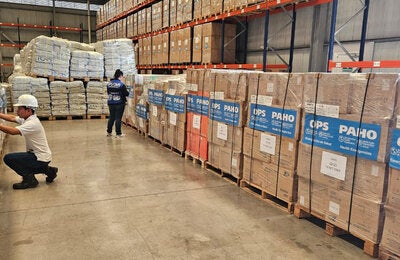
Bogotá, May 22, 2025 – Within the framework of the PROTECT Project, led by the World Bank and the Pan American Health Organization (PAHO) in Colombia, an Intersectoral Simulation Exercise was conducted, focusing on the response to a potential Highly Pathogenic Avian Influenza (HPAI) outbreak.
The activity, funded by the Pandemic Fund and with technical support from PANAFTOSA, brought together health, agriculture, and environmental authorities. Its purpose was to evaluate communication, coordination, and response capacity in the face of zoonotic emergencies, identifying strengths and areas for improvement to enhance national preparedness.
The exercise recognized progress in response protocols within the health and agriculture sectors and multisectoral coordination mechanisms. However, the need for more active integration of the environmental sector was highlighted, especially in situations involving wildlife or companion animals. The role of ICA's SINECO platform, the National Focal Point (CNE), and the Avian Influenza and One Health technical roundtables was also emphasized.
The session allowed for progress in defining priorities, such as strengthening joint surveillance of domestic and wild animals, developing an intersectoral risk analysis, and finalizing the Intersectoral Avian Influenza Preparedness and Response Plan, which is currently under development.
Strengthening National Preparedness with a One Health Approach
Updating the National Multi-Hazard Plan for biological risks and revising the National Anti-Pandemic Plan was emphasized in human and animal outbreaks. This ensures they serve as integrated intersectoral response instruments, incorporating the environmental sector more clearly. It was also recommended that institutional responsibilities for wildlife monitoring and companion animal surveillance be defined, and risk communication should be strengthened and coordinated across sectors.
This exercise marks a concrete step forward in implementing the One Health approach in Colombia. It promotes collaboration among sectors and strengthens national capacity to confront emerging zoonotic threats. The experience aligns with the International Health Regulations (IHR) and the WHO's PRET strategy, contributing to a more resilient and integrated national preparedness architecture.





